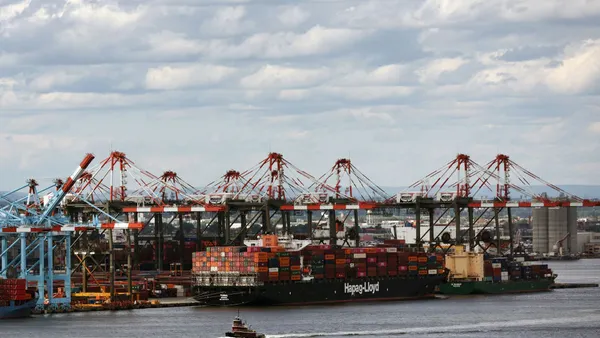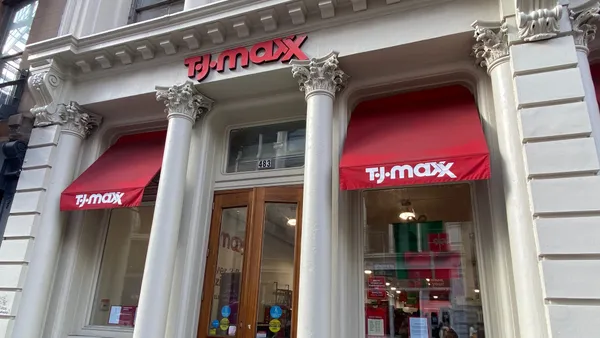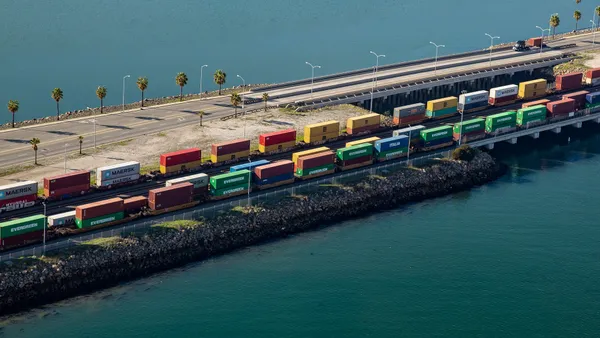Dive Brief:
- Maersk's average freight rates increased 18% in Q4 as a result of surging demand and shortages of equipment and vessels, CFO Patrick Jany said on the company's earnings call Wednesday.
- Maersk expects a high freight rate environment to continue through Q1 before easing in Q2, though "it is really hard to predict the demand patterns for 2021," Jany said.
- The company has also seen contract rates increase across the board, but Jany did not provide an average dollar amount. "I will say that we are happy about the level that we have agreed with our customers," he said.
Dive Insight:
Last year dealt the ocean shipping industry dramatic demand swings, and shippers were left clamoring for space on fully booked ships as 2020 came to a close.
"It's really extraordinary," CEO Søren Skou said of the demand for U.S. imports.
To respond to increased demand in Q4, the company deployed as much capacity as possible to keep up.
"Right now we have everything that we can deploy deployed, so to speak," Skou said.
The company is also chartering additional capacity to keep up with the current demand. It chartered 405 ships and owned 301 in 2020, and 12 vessels were idle "mainly due to repairs, scrubbers retrofitting, and capacity adjustments," according to its financial documents.
"The sudden pickup in demand has led to a number of bottlenecks in the supply chain, which has driven the short-term rates to increase significantly," Jany said.
These bottlenecks have meant shippers are dealing with higher rates, more expensive equipment, increased rates of rolled cargo and a downturn in schedule reliability.
Still, the strong environment in the market during Q4 2020 was not enough to make up for the downturn in demand during the previous Q2 in the early days of the coronavirus pandemic. Maersk saw its ocean business decline 2% YoY for 2020 as a result, according to its annual report.
But the carrier credited its "agile capacity deployment" for helping it to lower costs. And Maersk wasn't alone in doing this.
Carriers turned to blank sailings when demand dissipated earlier in 2020m in an attempt to better match capacity to the market. So, while Maersk's capacity is fully deployed now, its average capacity for 2020 was down 1.2% YoY, according to its annual report.
This isn't expected to continue in 2021, though. Maersk is forecasting a 3% to 5% growth in its ocean business in 2021, Skou said.














